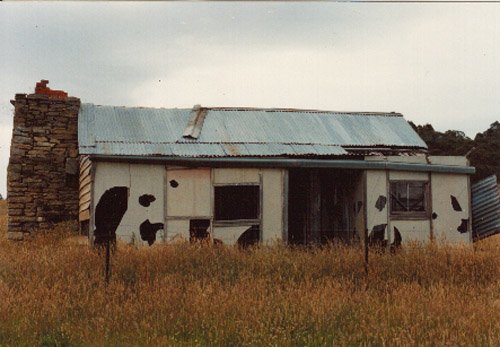Davey Brayshaws Hut
Known as Brayshaws Hut, Davy Brayshaws Hut, Tin Dish Hut or Russells Hut.
GPS: S 35.876786 E 148.983975
Location
Brayshaws is immediately adjacent to the Tharwa to Adaminaby Road, almost as far south as you can drive to the Namadgi-NSW border. A sign by the road, a fancy parking lot and a stile over the fence lead to a 100m walk to the building. The grid reference is 791 279 on the Shannons Flat 1:25,000 map. Popular walks to other huts, extend from this location.
GPS:
Brief History
Brayshaws was built in 1903 by Edward Brayshaw for Davey Brayshaw, to support grazing. Davey was one of nine sons born to William and Flora (nee Crawford) Brashaw and lived here until his death in 1931.
It was occupied until the early 1960's afterwhich it was converted to shearers quarters. A shearing shed used to exist up the hill from the house, along with extensive yards, all removed when the land was resumed for the Gudgenby Nature Reserve.
From the 1930's it was occupied by Henry and Iris Curtis, who built timber and fibro extensions. These are visible in the photo below, but were badly damaged in the 1070’s.
In the late 1980s, it received extensive renovation, returning it to the original design. This involved removing a more recent extension from the rear of the building, plus extensive repair work to the original structure.
This picture was taken in 1991 during that restoration showing Maurie Sexton on the ladder, master of the work and then President of KHA.
Across the road from Brayshaw's hut, are the visible ruins of an old school house. Known locally as the Tin Dish School, and officially as the Bobeyan Subsidised School, it was a small one roomed structure of weatherboards and iron. It was built by local parents from materials from another school.
Only squared blocks of grey stone from the fire place remain. it opened for first term of 1907, operated for four terms of 1908 and 1909, then closed at the end of the first term in 1910.
William Gottaas was the teacher. Children from the Dwyer, Perry, Waterman and Chalker families attended, as their holdings were along nearby Grassy Creek.
References
1. KHA Reference 1803.


